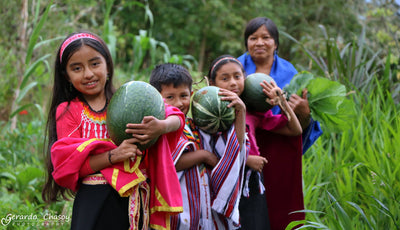Andinas Colombian Coffee Single Origin: NATURAL
Natural coffee process also know as Dry Process is the oldest method known, it dates back to Africa where is said to originate.
Natural coffees have a generally fruitier profile than any other process, the flavors can be reminiscent of coffee cherry, blueberry, raspberry or strawberry. Historically Natural or Dry processing has been practiced in climates that are dry, warm and sunny without much humidity or cloud cover; today the technique is gaining popularity and is being adopted by producers all over the world who are interested in the profound results from the longer fruit contact to the seed.
As in every other processing method the coffee cherry is picked ripe. Natural Coffees are left in their whole fruit for the ENTIRE duration of the drying time, which is part of what creates their distinctly different profile. Because the seeds are NOT removed from the fruit for Natural processing, the cherries themselves are incredibly important, ONLY the ripest, freshest, and most developed fruit will be accepted.
At Andinas Coffee meticulous sorting will take place during delivery, as well as throughout the drying process, instead of being loaded for depulping, fermentation and washing, the Coffee is brought to the mill in cherry and sorted, weighed and reported before moving directly to the drying area. Andinas Coffee utilizes African Beds for dying, many consisting of raised beds are woven or made of mesh in order to allow air to circulate around the fruit, this allows for more even and uniform drying of the coffee cherry.
Drying Naturals can be tricky for several reasons . The fruit’s organic material beings fermenting as soon as the cherries are picked, and fermentation is accelerated once the fruit is laid out under the hot sun. The fruit is susceptible to mold and other types of defects that can occur during this time, so it requires constant attention by staff to rotate the cherries and to continue to sort them as they dry.
Drying Naturals also takes longer than Washed or even Honey Coffees. It can take three to four weeks for the fruit to dry completely and the seeds inside to reach the moisture content required for export, around 11%. Often in order to regulate and modulate the drying process, workers will pile or cover the coffee depending on what is necessary, this may include moving it to different raised beds that receive sun light or shade in different portions of the day.







